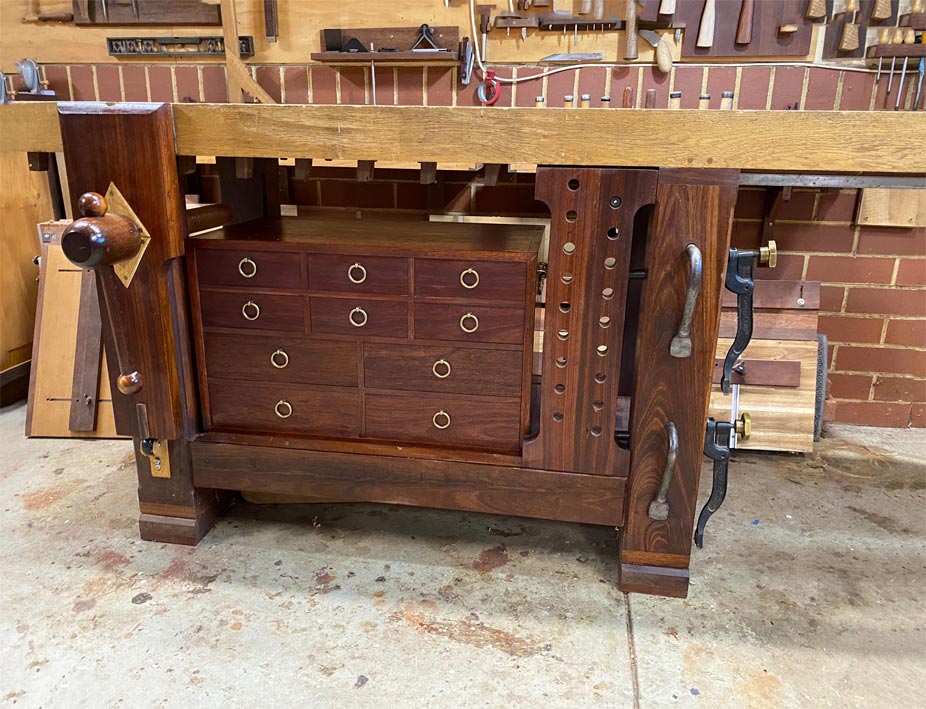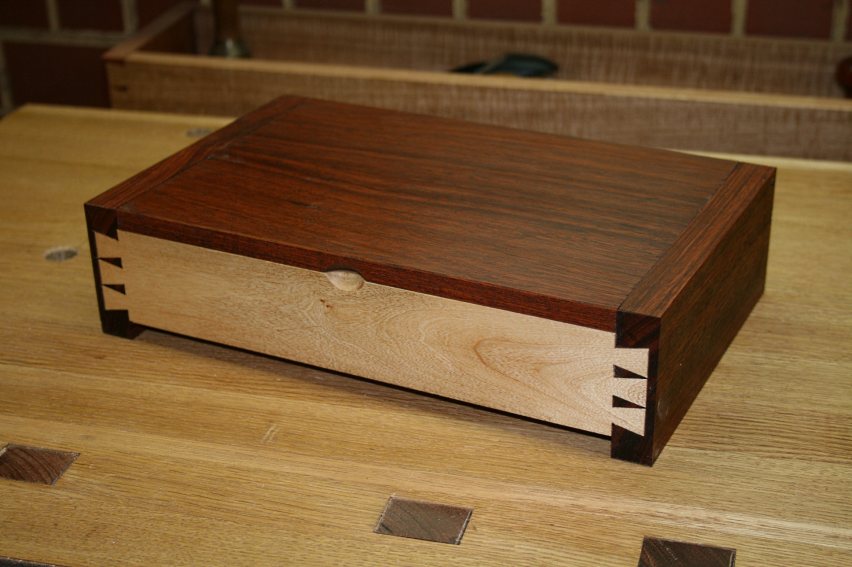Dr.Al
Old Oak
Sorry: long post with no pictures yet...
After reading one of Tom Fidgen's books, I've decided I'd like to make a tool chest. The tool chest is going to spend something like 50 weeks in the average year empty and stored somewhere away from the workshop (I don't have space in the workshop for another tool chest and I'd rather have the tools wall-mounted for easy access).
The main reasons for making the tool chest are (in rough order of priority):
As a general rule, we'll usually have at least one holiday a year where we'll travel by car somewhere or other in the middle of nowhere and stay in a self-catering cottage. We used to gravitate towards mountainous areas and spend every day walking the hills, but since my other half's health deteriorated, hill walking isn't really on, so the holidays tend to be more sedentary (apart from when I go for walks on my own). Carolyn always has lots of knitting & crochet type projects that are quite portable and follow us on holiday but there are only so many books I can read and jigsaws/crosswords I can do before I start to go stir crazy. I've explored various other weird and wonderful hobby ideas, but nothing has really grabbed me like wood & metalwork do. My artistry skills are seriously lacking so things like whittling and carving aren't ideal for me.
What I'd love to be able to do is to take a simple-ish tool kit on holiday, along with some pre-thicknessed boards and find some space somewhere to potter at small boxes and maybe other similar size things (e.g. kumiko or whatever). Tom Fidgen's "Made by Hand" book includes a design for a tool chest that, when clamped down to a convenient table, doubles as a small workbench. I thought that was a great idea. I'm not going to follow the design in the book as I'd rather be in control of the design and besides, I think I'd like to make something a bit bigger than his version. Even if I never end up using it, I think it'll be a really good project to work on.
I've started scheming out a design and it'll take me a while to get that finished (and get through some of the other projects that are on the list above this one), but in the meantime I'd be interested to know what the Wood Haven would recommend for the wood for this? My thoughts so far are that it needs to be light (it's going to have a lot of tools in it and I'd like to be able to lift it into the car when it's loaded!) but also relatively tough (it's going to serve as a workbench as well as a tool chest). Having said that it needs to be tough, it's only likely to be used when I'm on holiday, so very infrequently - I'm not sure what difference that makes really. The wood also needs to be relatively easy to get hold of (probably something that Wentwood or Williams British Hardwoods stock), so maybe Poplar, Sweet Chestnut or Sycamore? I'm very open to suggestions of alternatives...
I guess multiple woods is also a possibility: there will be a main frame (doubling as a workbench), but also a set of drawers and a "tote" for the bigger stuff. The top of the workbench bit could also be a harder wood than the rest of the frame if that's not going to cause problems with different rates of expansion.
What wood would you use?
After reading one of Tom Fidgen's books, I've decided I'd like to make a tool chest. The tool chest is going to spend something like 50 weeks in the average year empty and stored somewhere away from the workshop (I don't have space in the workshop for another tool chest and I'd rather have the tools wall-mounted for easy access).
The main reasons for making the tool chest are (in rough order of priority):
- I think I'll enjoy the project;
- I think the joinery will be challenging and I'll hopefully get better at hand toolery in the process (the design already has dovetails, half-blind dovetails and wedged tenons; I've never cut a half-blind dovetail or a wedged tenon in my life, so this is possibly biting off more than I can chew again!);
- The last few relatively big project ideas I've had (e.g. TV stand, 3D printer enclosure) have stumbled at the drawing stage as I couldn't get my head round what I wanted them to look like: a tool chest fits into the category of functionality over form so is probably more within my comfort zone design-wise;
- I'd like to be able to take some tools on holiday and use them while I'm there!
As a general rule, we'll usually have at least one holiday a year where we'll travel by car somewhere or other in the middle of nowhere and stay in a self-catering cottage. We used to gravitate towards mountainous areas and spend every day walking the hills, but since my other half's health deteriorated, hill walking isn't really on, so the holidays tend to be more sedentary (apart from when I go for walks on my own). Carolyn always has lots of knitting & crochet type projects that are quite portable and follow us on holiday but there are only so many books I can read and jigsaws/crosswords I can do before I start to go stir crazy. I've explored various other weird and wonderful hobby ideas, but nothing has really grabbed me like wood & metalwork do. My artistry skills are seriously lacking so things like whittling and carving aren't ideal for me.
What I'd love to be able to do is to take a simple-ish tool kit on holiday, along with some pre-thicknessed boards and find some space somewhere to potter at small boxes and maybe other similar size things (e.g. kumiko or whatever). Tom Fidgen's "Made by Hand" book includes a design for a tool chest that, when clamped down to a convenient table, doubles as a small workbench. I thought that was a great idea. I'm not going to follow the design in the book as I'd rather be in control of the design and besides, I think I'd like to make something a bit bigger than his version. Even if I never end up using it, I think it'll be a really good project to work on.
I've started scheming out a design and it'll take me a while to get that finished (and get through some of the other projects that are on the list above this one), but in the meantime I'd be interested to know what the Wood Haven would recommend for the wood for this? My thoughts so far are that it needs to be light (it's going to have a lot of tools in it and I'd like to be able to lift it into the car when it's loaded!) but also relatively tough (it's going to serve as a workbench as well as a tool chest). Having said that it needs to be tough, it's only likely to be used when I'm on holiday, so very infrequently - I'm not sure what difference that makes really. The wood also needs to be relatively easy to get hold of (probably something that Wentwood or Williams British Hardwoods stock), so maybe Poplar, Sweet Chestnut or Sycamore? I'm very open to suggestions of alternatives...
I guess multiple woods is also a possibility: there will be a main frame (doubling as a workbench), but also a set of drawers and a "tote" for the bigger stuff. The top of the workbench bit could also be a harder wood than the rest of the frame if that's not going to cause problems with different rates of expansion.
What wood would you use?




















